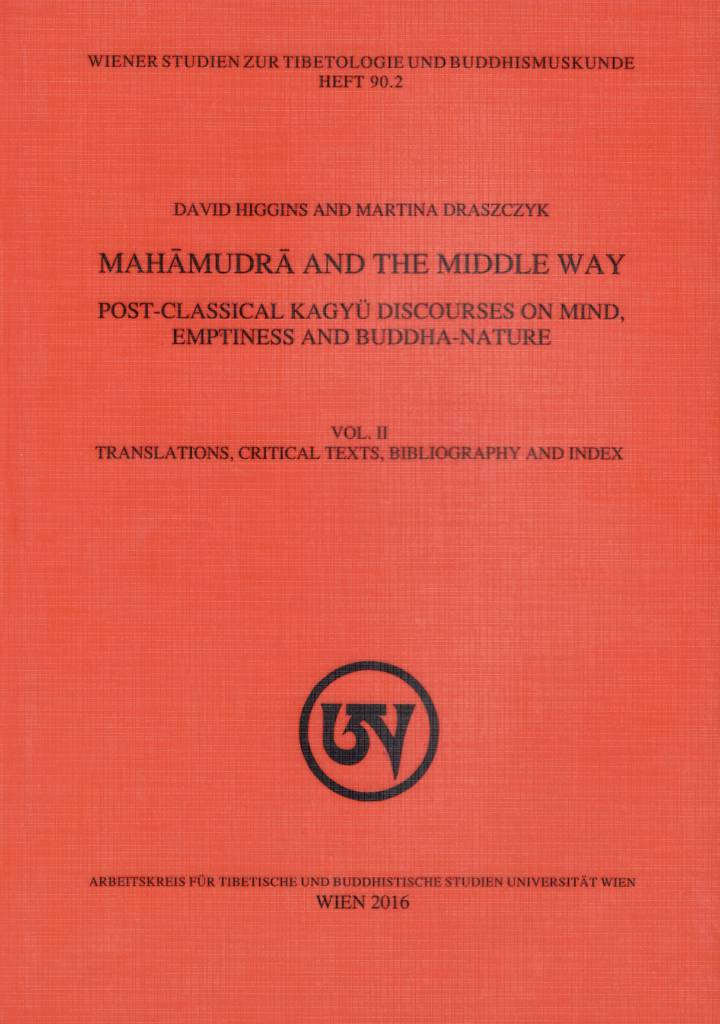Other-Emptiness and the Great Middle Way
Watch & Learn
In English with his direct, characteristic humor, Khenpo Rinpoche presents the "shining star" of buddha-nature in the minds of sentient beings as the same nature as the buddhas. He says, "We are always guided by this nature all the time whether we realize it or not."
Jonang
Dölpopa Sherab Gyaltsen
As a basic definition, Dölpopa states:
- དེ་ལ་ཀུན་རྫོབ་གློ་བུར་བའི་དངོས་པོ་རྣམས་ནི་གནས་ལུགས་ལ་གཏན་ནས་མེད་པའི་ཕྱིར་རང་གི་ངོ་བོས་སྟོང་སྟེ་དེ་ནི་རང་སྟོང་ངོ་། ཀུན་རྫོབ་དེ་རྣམས་ཀྱིས་སྟོང་པའི་དོན་དམ་སྟོང་པའི་དོན་དམ་གཉུག་མ་ནི་ནམ་ལང་མེད་པ་མ་ཡིན་པའི་ཕྱིར་གཞན་སྟོང་ངོ་།
- Since adventitious, relative entities do not exist at all in reality, they are empty of their own essences; they are self-empty. The innate ultimate, which is the ultimate emptiness of these relative things, is never non-existent; therefore, it is other-empty.
~ Dölpopa Sherab Gyaltsen, Collected Works ('Dzamthang ed., 1998), Vol. 6: 416.
-Translated by Douglas Duckworth in "Onto-theology and Emptiness: The Nature of Buddha-Nature." (2014), page 1075.
Kagyu
Khenpo Gangshar
In his Naturally Liberating Whatever You Meet: Instructions to Guide You on the Profound Path, Khenpo Gangshar states:
- འདི་སེམས་ཅན་ཐམས་ཅད་ཀྱི་སེམས་ཀྱི་རང་བཞིན། དུས་གསུམ་སངས་རྒྱས་ཀྱི་དགོངས་པ། ཆོས་སྒོ་བརྒྱད་ཁྲི་བཞི་སྟོང་གི་སྙིང་པོ། འདྲེན་མཆོག་དཔལ་ལྡན་བླ་མའི་ཐུགས། བཀའ་བར་པ་ནས་ཤེར་ཕྱིན་དང་འཁོར་ལོ་ཐ་མ་ནས་བདེ་གཤེགས་སྙིང་པོ། སྔགས་ཐུན་མོང་བའི་སྐབས་སུ། གཞི་རྒྱུད་རང་བཞིན་ལྷུན་གྱིས་གྲུབ་པའི་དཀྱིལ་འཁོར་
- The mind-essence is the nature of all sentient beings, the realization of the buddhas of the three times, the essence of the eighty-four thousand Dharma-doors and the heart of the glorious master, the supreme guide. It is the transcendent knowledge of the second set of teachings and the sugata-essence of the last turning of the wheel of the Dharma. According to the general system of mantra it is called continuity of ground, the spontaneously present mandala of the innate nature.
~ Mkhan po gang shar. zab lam khrid kyi man ngag 'phrad tshad rang grol. In gsung 'bum gang shar dbang po. Kathmandu: thrangu tashi choling, 2008: p. 121.
-Translation from Thrangu Rinpoche. Vivid Awareness: The Mind Instructions of Khenpo Gangshar. Translated by David Karma Choephel. Boston: Shambhala Publications, 2011: p. 226.
Nyingma
In his Naturally Liberating Whatever You Meet: Instructions to Guide You on the Profound Path, Khenpo Gangshar states:
- འདི་སེམས་ཅན་ཐམས་ཅད་ཀྱི་སེམས་ཀྱི་རང་བཞིན། དུས་གསུམ་སངས་རྒྱས་ཀྱི་དགོངས་པ། ཆོས་སྒོ་བརྒྱད་ཁྲི་བཞི་སྟོང་གི་སྙིང་པོ། འདྲེན་མཆོག་དཔལ་ལྡན་བླ་མའི་ཐུགས། བཀའ་བར་པ་ནས་ཤེར་ཕྱིན་དང་འཁོར་ལོ་ཐ་མ་ནས་བདེ་གཤེགས་སྙིང་པོ། སྔགས་ཐུན་མོང་བའི་སྐབས་སུ། གཞི་རྒྱུད་རང་བཞིན་ལྷུན་གྱིས་གྲུབ་པའི་དཀྱིལ་འཁོར་
- The mind-essence is the nature of all sentient beings, the realization of the buddhas of the three times, the essence of the eighty-four thousand Dharma-doors and the heart of the glorious master, the supreme guide. It is the transcendent knowledge of the second set of teachings and the sugata-essence of the last turning of the wheel of the Dharma. According to the general system of mantra it is called continuity of ground, the spontaneously present mandala of the innate nature.
~ Mkhan po gang shar. zab lam khrid kyi man ngag 'phrad tshad rang grol. In gsung 'bum gang shar dbang po. Kathmandu: thrangu tashi choling, 2008: p. 121.
-Translation from Thrangu Rinpoche. Vivid Awareness: The Mind Instructions of Khenpo Gangshar. Translated by David Karma Choephel. Boston: Shambhala Publications, 2011: p. 226.
Further Readings
[A Direct Path to the Buddha Within]
One of the main goals of Zhönu Pal's Ratnagotravibhāga commentary is to show that the Kagyü path of mahāmudrā is already taught in the Maitreya works and the Laṅkāvatārasūtra. This approach involves resting your mind in a nonconceptual experience of luminosity or the dharmadhātu (the expanse or nature of all phenomena) with the help of special "pith instructions" (Tib. man ngag) on how to become mentally disengaged. A path of directly realizing buddha nature is thus distinguished from a Madhyamaka path of logical inference and it is with this in mind that Zhönu Pal's commentary can be called a "direct path to the buddha within."
[Mahāmudrā and the Middle Way]
This two-volume publication explores the complex philosophy of Mahāmudrā that developed in Tibetan Dwags po Bka’ brgyud traditions between the 15th and 16th centuries CE. It examines the attempts to articulate and defend Bka’ brgyud views and practices by four leading post-classical thinkers: (1) Shākya mchog ldan (1423‒1507), a celebrated yet controversial Sa skya scholar who developed a strong affiliation with the Karma Bka’ brgyud Mahāmudrā tradition in the last half of his life, (2) Karma phrin las Phyogs las rnam rgyal (1456‒1539), a renowned Karma Bka’ brgyud scholar-yogin and tutor to the Eighth Karma pa, (3) the Eighth Karma pa himself, Mi bskyod rdo rje (1507‒1554), who was among the most erudite and influential scholar-hierarchs of his generation, (4) and Padma dkar po (1527‒1592), Fourth ’Brug chen of the ’Brug pa Bka’ brgyud lineage who is generally acknowledged as its greatest scholar and systematizer.


